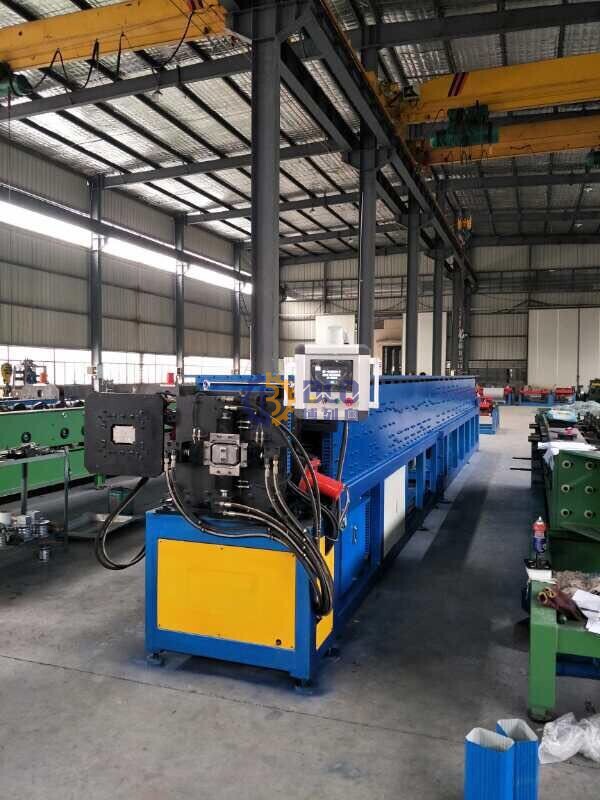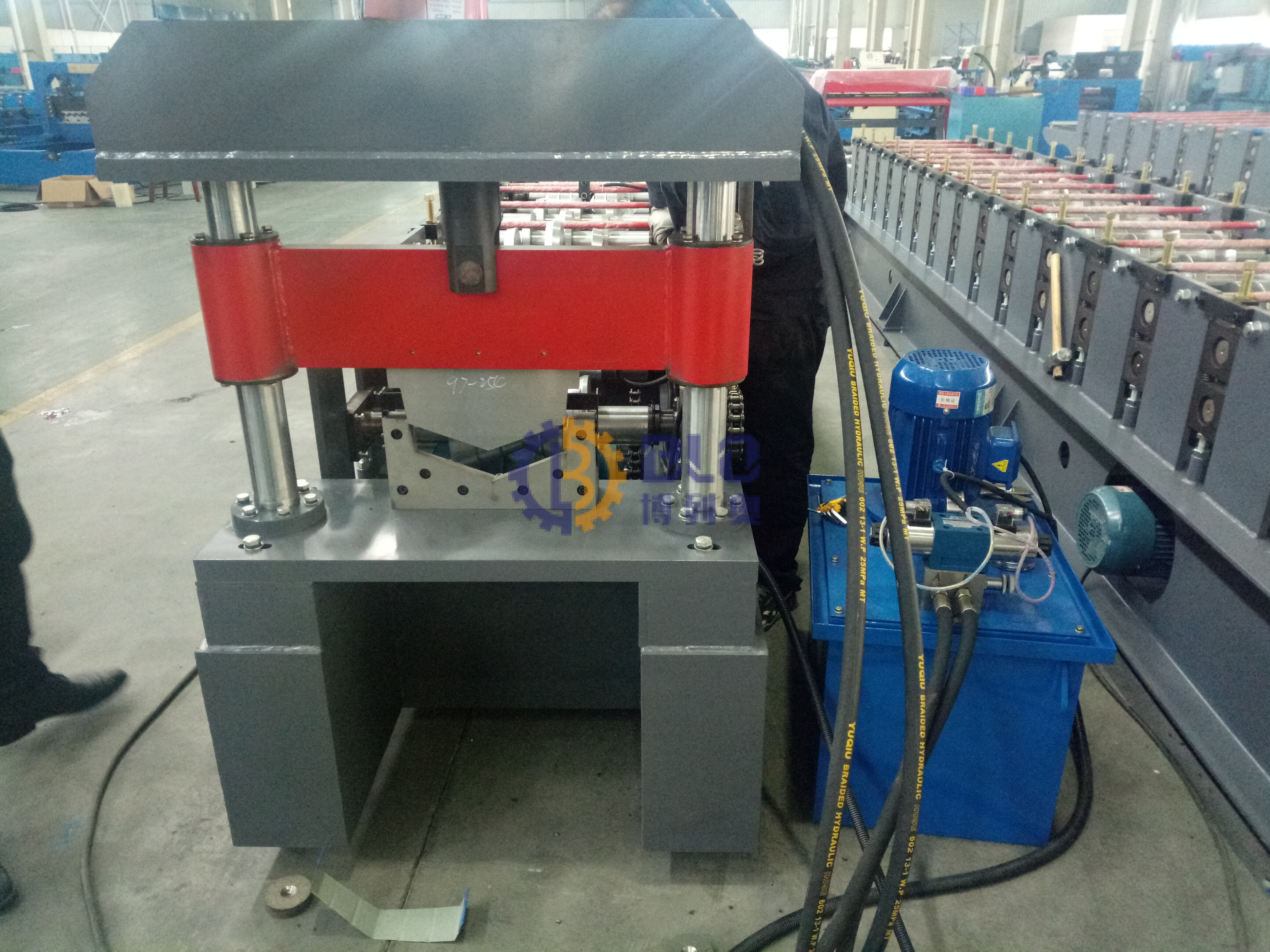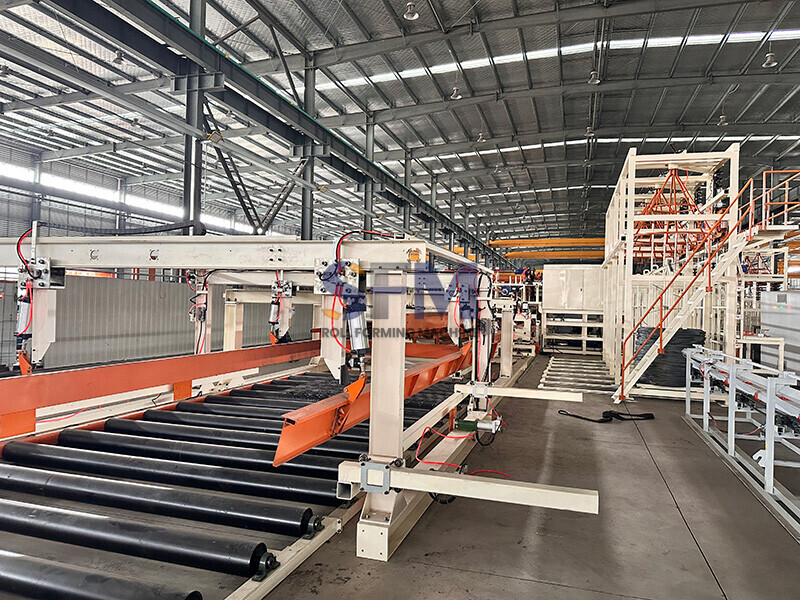A Double Layer Roof Panel Roll Forming Machine is a specialized manufacturing equipment used to produce double-layer metal roof panels in a continuous roll-forming process. These panels are widely used in construction for roofing applications, offering enhanced durability, insulation, and weather resistance compared to single-layer panels.

Key Features of the Machine:
1. Double-Layer Panel Formation
- The machine forms two layers of metal sheets simultaneously, which may include:
Top Layer: Typically made of pre-painted galvanized steel, aluminum, or color-coated metal for weather resistance.
- Bottom Layer: Often made of galvanized steel or another protective layer for structural strength and insulation.
2. Roll Forming Process
- The machine uses a series of rollers and dies to gradually shape flat metal coils into the desired double-layer roof panel profile.
- The process is continuous, allowing for high-speed production with consistent quality.
3. Automatic Control System
- Modern machines feature PLC (Programmable Logic Controller) and HMI (Human-Machine Interface) for precise control over:
- Panel thickness
- Roll forming speed
- Cutting length
- Layer alignment
4. Hydraulic or Servo Cutting System
- Panels are cut to the required length using hydraulic shearing or servo-driven cutting for clean, burr-free edges.
5. Material Feeding & Uncoiling
- Equipped with dual decoilers to feed two separate metal coils (top and bottom layers) simultaneously.
- Some machines include automatic welding for coil joints to ensure uninterrupted production.
6. Insulation & Sealing Options
- Some double-layer roof panels have an insulating foam or air gap between layers for thermal and acoustic benefits.
- The machine may integrate adhesive application systems to bond the layers together.
Common Applications:
- Industrial & Commercial Roofing (factories, warehouses, airports)
- Cold Storage & Insulated Roofing (food processing plants, refrigerated warehouses)
- Residential Roofing (modern architectural designs)
- Agricultural Buildings (poultry farms, greenhouses)
Advantages of Double-Layer Roof Panels:
✔ Better thermal & sound insulation (reduced heat transfer)
✔ Higher strength & load-bearing capacity
✔ Improved weather resistance (reduces condensation)
✔ Aesthetic flexibility (different colors/textures for top and bottom layers)
Types of Double-Layer Roof Panels Produced:
- Standing Seam Roof Panels (hidden fastener systems)
- Corrugated Double-Layer Panels
- Sandwich Panels with Insulation Core
Latest Post
 How To Work Downpipe Forming And Bending Integrated Machine2025-04-25
How To Work Downpipe Forming And Bending Integrated Machine2025-04-25 What is a ridge cap roll forming machine?2025-04-18
What is a ridge cap roll forming machine?2025-04-18 Custom Auto Stackers: Enhancing Efficiency in Material Handling2025-04-09
Custom Auto Stackers: Enhancing Efficiency in Material Handling2025-04-09 How Automatic Wire Mesh Welding Machines Boost Efficiency and Reduce Costs2025-04-07
How Automatic Wire Mesh Welding Machines Boost Efficiency and Reduce Costs2025-04-07 Downspout Roll Forming Machine in Gutter System2025-03-21
Downspout Roll Forming Machine in Gutter System2025-03-21
Ask For A Quick Quote
If you are looking for more information on our services, or how we could potentially help, we would love to hear from you!





